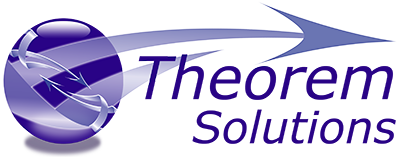Find Out Latest Updates With Theorem-XR
The Q1 2022 release adds support for several AEC systems, including REVIT, IFC and Navisworks.
Latest News
April 11, 2022
What’s included in the Theorem Solutions' Theorem XR first release of the year? Full collaboration for Microsoft Azure Remote Rendering (ARR) users, support for architecture, engineering and construction (AEC) systems, offline licensing and project management updates to the Visualization Pipeline.
Fully Collaborative ARR
Building on our continuing support for Microsoft’s Azure Remote Rendering (ARR), this release enables other device users (such as HTC Vive, Oculus Rift, Magic Leap, Oculus Quest, or Android and IOS devices) to access the same large datasets as HoloLens 2 users as full collaboration is now supported in ARR, and can be used across the company's range of applications.
Support for AEC systems
Theorem-XR already supports many native 3D data formats such as CATIA V5, 3DEXPERIENCE, NX and Creo, Scanned data, ISO/ANSI standard data like STEP and JT, lightweight visualization formats such as 3D XML and Creo View, and neutral formats such as FBX and glTF.
The Q1 2022 release adds support for several AEC systems, including REVIT, IFC and Navisworks. For those designing large-scale factory layouts or construction projects it is now easier to be able to navigate and review data at full scale and in context, the company reports.
See a full list of supported formats.
Offline Licensing
Previously, Theorem-XR use case based experiences for Visualization, Design Review, Factory Layout and Training would require WiFi access to run. But there are situations where people want to take data to a location that doesn’t have network access. Users can now view these datasets away from their network by caching the license—taking a license from their server for a period of time (a fixed duration of 7 days from checkout) and tying it to their augmented reality (AR), mixed reality (MR) or virtual reality (VR) device to use their experiences anywhere.
Visualization Pipeline Enhancements
The Visualization Pipeline enables users to take source 3D data and create 3D content in a fully automated process for use in XR experiences. The pipeline automatically tessellates the data and prepares it for XR. As well as processing (part files) geometry it retains product structure and metadata, including animation data.
Search functionality has been included on the server homepage.
Users also now have the ability to archive or disable projects, and to only see projects that are relevant to them.
Theorem-XR
Theorem-XR enables ability to visualize your 3D CAD and PLM assets in context and at full scale, using AR/MR/VR technologies on the device of your choice. Theorem-XR is data and device neutral, and offers a range of use case based experiences.
Theorem-XR’s standard engineering-based use case experiences work collaboratively, enabling remote teams and home-based staff to join and work in an immersive multi-user environment.
With Theorem-XR, experiences are underpinned by the Visualization Pipeline, which provides a fully automated process that takes 3D data assets directly into Theorem-XR, or for the creation of Unity or Unreal assets for use in internally developed XR solutions.
Sources: Press materials received from the company and additional information gleaned from the company’s website.
More Theorem Solutions Coverage

Subscribe to our FREE magazine, FREE email newsletters or both!
Latest News
About the Author
DE’s editors contribute news and new product announcements to Digital Engineering.
Press releases may be sent to them via [email protected].







